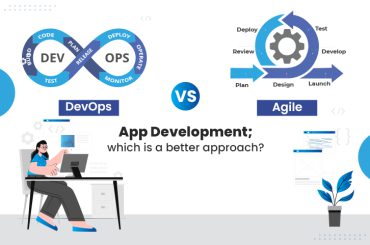The majority of enterprises are clearly warned by COVID-19 that supply chain disruption is a real and ongoing issue. The AI features already include improved decision-making, quicker cycle time reduction, and ongoing development. However, AI in the supply chain will cause a huge stir in the upcoming years. The production rate of the sanitizer is slowed down by inadequate equipment, and the increased demand for vaccines and essential medications puts real pressure on pharmacy stores. The one silver lining among all the problems is that artificial intelligence could be able to assist humanity.
Supply Chain Management
Supply Chains are under continual pressure to perform due to shifting weather patterns, natural calamities, political unrest, financial upheavals, and a pandemic. Typically, the upstream supply chain needs to be strengthened to preserve supply continuity. Risk management strategies used in supply chain management are adapted from several disciplines, including engineering, economics, and mathematics. Although there is a growing body of research on SCRM, the fundamental steps are the identification of the risk, its measurement, and the identification of feasible mitigation strategies. The risk may be simply described as an occurrence that has a chance of having a detrimental effect on the organization or supply chain.
AI and Supply Chain Management
Various organizations, activities, processes, assets, people, and strategic stakeholders make up the complex systems known as supply chains. The supply chain’s complexity is also demonstrated by the information that moves across it, ensuring that the right decisions are made to ensure its effective and efficient operation. In the chain, humans make these judgments. The complexity of supply networks has increased owing to erratic weather patterns and external risk factors as they have spread far and wide. The capacity of software systems has increased, and Big Data systems provide a wealth of data for pattern analysis and decision-making.
To identify supply chain risks and suggest mitigation measures, artificial intelligence (AI), especially machine learning techniques, might be used to capture both large and rapid data from the supply chain systems.
The Advantages of AI in Supply Chain
A Supply chain blend with AI makes sure that material bills and PO data are organized and that timely, accurate predictions are created. Furthermore, we have enlisted some of the advantages of AI in the Supply Chain.
Seamless Inventory Management
Accurate inventory management may ensure the proper flow of goods into and out of a warehouse. Order processing, selection, and packaging are only a few of the numerous inventory-related factors that can be time-consuming and have a high susceptibility to mistakes. Additionally, effective inventory management may aid in avoiding overstocking, insufficient supply, and unanticipated stock-outs.
Safety and Efficiency in the Warehouse
Additionally, AI systems can expeditiously and accurately resolve a variety of warehouse concerns, as well as streamline complicated processes and increase productivity. Intelligent planning and effective warehouse management are made possible by AI-based automated technologies, which can improve worker and material safety. AI may also examine data on workplace safety and alert producers to potential dangers. It can update operations, record stocking parameters, and perform essential feedback loops and preventative maintenance.
Reduced Cost
The supply chain can greatly benefit from AI systems in this regard. Automated intelligent processes can operate without mistakes for a longer period of time, decreasing the number of errors and mishaps in the workplace, from customer service to the warehouse. With their increased speed and precision, warehouse robots are more productive.
Transparent Analytical Insights
Many businesses today lack crucial information that may be used to prompt decisions that satisfy expectations quickly and nimbly. In comparison to conventional systems, cognitive automation that harnesses AI’s capability to sort through vast volumes of dispersed data to identify patterns and quantify tradeoffs at a scale.
Management of Inventory and Demand
In order to prevent “stock-out” problems, one of the largest challenges encountered by supply chain firms is to maintain optimal stock levels. Overstocking can also result in excessive storage expenses, which, on the other hand, don’t generate any income.
Understanding the art of inventory and warehouse management is what strikes the ideal balance in this situation.
Use Cases of AI in Supply Chain
Supplier segmentation using AI
Any organization’s strategic activity of segmenting its suppliers into categories based on their commonalities is known as “supplier segmentation.” Within each group, contracts, managing, and dealing with suppliers’ concerns are similar, but they differ from those of suppliers in other groups. The development and enhancement of the performance of the organization are facilitated by supplier segmentation, which also encourages the efficacy and efficiency of relationships with suppliers.
Managing Supply Chain Risks Using Machine Learning Algorithms
The term “supply chain risk management” (SCRM) describes the coordinated and cooperative efforts of all parties involved in a supply chain to assess, identify, monitor, and mitigate risks with the goals of enhancing robustness and resilience, reducing supply chain vulnerability, and ensuring continuity and profitability.
Application of ML Algorithms in Sales/Demand Estimation
Planning in SCM is focused on estimating sales and demand. Incorporating nonlinear analysis has allowed ML approaches to precisely estimate and predict demand, sales, and inventories, resulting in the improvement of supply chain efficiency. Using an intelligent forecasting system improves performance, lowers expenses, and boosts revenue and profit.
Inventory Management Using Machine Learning Algorithms
In supply chain management, storage has significant expenses. For instance, the yearly storage expenditures in supply chains range from 15 to 35 percent of the overall value of their firms. Supply chain inventory management aims to save costs, broaden the selection of products, and enhance customer service.
AI Algorithms in Distribution and Transportation
To deliver goods and services to consumers on time, the best route for vehicle transportation must be determined. Routing is often beyond the capacity of the human brain. By honestly and promptly examining the pattern of transportation, customer behavior, infrastructures, and vehicles, ML systems may provide better delivery routes.
Production Use of Machine Learning Algorithms
By taking into account various restrictions, ML tools will increase the accuracy of production planning and factory scheduling. For manufacturers who rely on build-to-order and produce-to-stock production processes, ML technologies will also make it feasible to balance the restrictions more efficiently than those that were done manually in the past. Manufacturers may employ ML techniques to minimize supply chain delays for components and parts used in their most intricately designed goods.
Wrap Up
The implementation of AI and ML algorithms in the Supply Chain is indispensable. At the moment, specialized use cases are where AI and machine learning flourish. Ideally, they will be able to forecast it using big data analytics, locate the risk’s source, estimate the risk using data on previous impacts, and recommend the most effective mitigation measures for that situation. It is possible to categorize procurement costs according to invoice line items using machine learning, but it is doubtful that AI will manage difficult supplier discussions.




